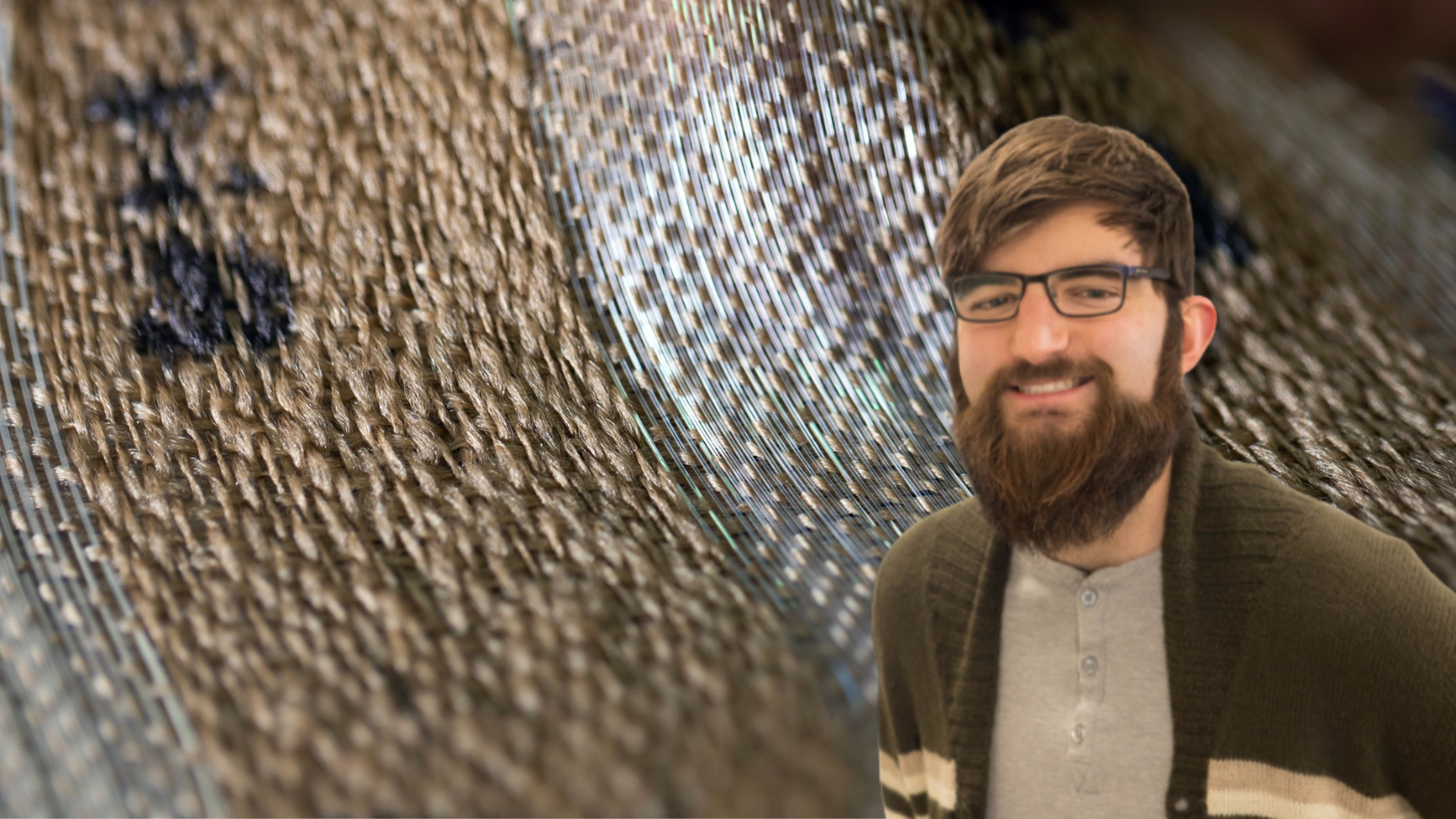
Can a tiny fiber fix the fashion industry’s big sustainability crisis?
Brian Iezzi is developing Fibarcode through the Innovation Crossroads program at Oak Ridge National Laboratory.
The current model for manufacturing and retailing apparel often leads to over production; for every 10 items made, on average, four are sold at full price, three at a reduced price, and three are never sold. These unsold items, or “deadstock” is typically landfilled domestically or abroad. If you’re concerned about the sustainability of this industry, you’re not alone. It worries Brian Iezzi too, which is why he has set out to find a solution.
Iezzi is new to the Knoxville area. He relocated to the region to participate in the 2024 cohort of Innovation Crossroads at Oak Ridge National Laboratory (ORNL) with his start-up Fibarcode.
He comes from a family that is very familiar with the textile industry. His grandfather has owned a dry cleaning and upholstery business for more than 50 years and his brother works for a textile recycling start-up called “Ambercycle” in California. Iezzi himself spent the last year working with the largest spun yarn manufacturer in the United States based in NC.
Through his time surrounded by the industry, Iezzi began recognizing issues with the circularity and sustainability of fashion.
“I realized that we probably shouldn’t be producing as much as we are,” he said. “And for what we do produce, I started to research how we could make them last longer and have a higher likelihood of being resold, repaired, or recycled after they are purchased.”
Right now, particularly in the clothing industry, the recycling value of fast fashion is close to zero. Ellen MacArthur has estimated that less than one percent of textiles produced are recycled into new textiles.
“Higher quality materials like wool or silk have a high recycling value,” he said. “But the vast majority of items today are made with commodity materials, mainly blends of cotton and polyester, which makes the economics of sorting and recycling them challenging.”
His brother’s company in California processes these mixed blends and experiences the challenges of sortation firsthand.
They frequently receive used textiles that don’t have any labels, meaning they’ve been cut out or are unreadable. Knowing the material content of the textile is critical to achieving economic yields as a recycler.
It got Iezzi wondering, what if there was a way to embed a fiber into the fabric that could easily be scanned and identified to help with sorting, recycling, and establishing a circular economy? That’s what he has set out to accomplish with Fibarcode.
“I am creating a fiber that will interact with light in certain ways. I am targeting areas of the spectrum that don’t interact with visible light,” he said.
This is important to note – a dress with a Fibercode identification fiber would not be visible to the human eye. It wouldn’t distract from the article of clothing, nor be felt while wearing it. It would only be one, or a small group of fibers.
While the fiber itself is still in the development phase, Iezzi noted some significant hurdles he hopes to overcome during his time in Innovation Crossroads.
“The success of Fibercode depends on clothing brands and textile manufacturers to be bought in,” he said. “Right now, feedback we have received from the sortation and recycling communities sees value in this… but we are working to find a value proposition for the manufacturers and retailers as they ultimately would be the ones implementing a solution like this.”
Doing so may not be as challenging now as it may have been five or ten years ago. Many forward-thinking brands have already partnered with recycling companies to prevent their clothing from being landfilled.
“Quantifying the number of items that are resold, repaired, and recycled can be used to track progress on brand’s environmental, social, and governance (ESG) reports. Given soon to be enacted legislation, this quantification of landfill diversion would incentivize positive action through a lower fee structure,” Iezzi said.
He is excited to get to work with Innovation Crossroads!
Like what you've read?
Forward to a friend!

